Join More Than 50,000+ Subscribers and get latest camera news and rumors
NEW CAMERA VIDEOS ON YOUTUBE
|
By admin, on November 1st, 2022
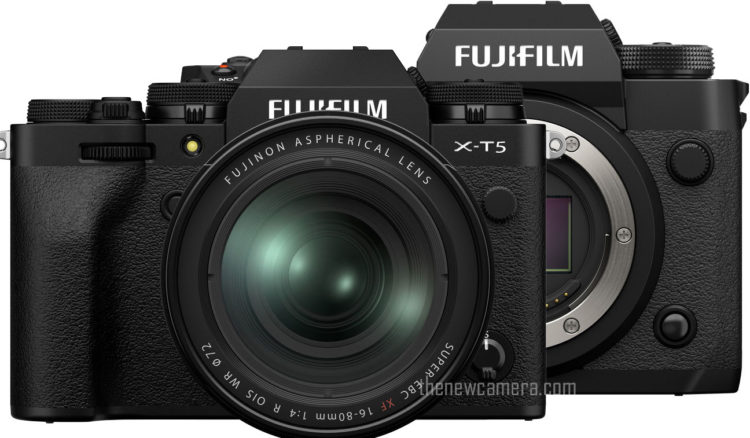
Both of the Fuji Cameras feature the latest X-Processor 5 engine and a 5th-gen 40MP X-Trans BSI APS-C sensor, despite having the same sensor and image processor we do have some differences in the core specs of both cameras.
|
|
|
| Camera |
FUJI X-T5 |
FUJI X-H2 |
| Sensor Type |
Effective: 40.2 Megapixel (6240 x 4160) |
Effective: 40.2 Megapixel |
| Crop Factor |
23.5 x 15.6 mm (APS-C) CMOS |
23.5 x 15.6 mm (APS-C) CMOS |
| Image Stabilization |
1.5x |
1.5x |
| Built-In ND Filter |
Sensor-Shift, 5-Axis |
Sensor-Shift, 5-Axis |
| Capture Type |
None |
None |
|
Stills & Video |
Stills & Video |
The Autofocus specification of both cameras is exactly similar to each other since we have the same sensor and image processor here. So, more or less the image quality of the camera and the AF performance of both are expected to remain the same.
| |
FUJI X-T5 |
FUJI X-H2 |
| Focus Type |
Auto and Manual Focus |
Auto and Manual Focus |
| Focus Mode |
Continuous-Servo AF, Manual Focus, Single-Servo AF |
Continuous-Servo AF, Manual Focus, Single-Servo AF |
| Autofocus Points |
Photo, Video
Contrast Detection, Phase Detection: 425 |
Photo, Video
Contrast Detection, Phase Detection: 425 |
| Built-In Flash |
No |
No |
| Flash Modes |
Auto, Commander, First-Curtain Sync, Manual, Off, Second-Curtain Sync, TTL Auto |
Auto, Commander, First-Curtain Sync, Manual, Off, Second-Curtain Sync, TTL Auto |
| Maximum Sync Speed |
250 Second |
250 Second |
| External Flash Connection |
Hot Shoe, PC Terminal |
Hot Shoe, PC Terminal |
As you can see we have a slightly better base ISO range in the Fuji X-H2 camera. Although the extent ISO range of both cameras remains the same.
- X-H2 125 to 12,800 in Manual, Auto Mode (Extended: 80 to 51,200)
- X-T5 – 160 to 12,800 in Auto Mode (Extended: 80 to 51,200)
| |
FUJI X-T5 |
FUJI X-H2 |
| Shutter Type |
Electronic Shutter, Mechanical Focal Plane Shutter |
Electronic Shutter, Mechanical Focal Plane Shutter |
| Shutter Speed |
Mechanical Shutter
1/8000 to 900 Seconds in Manual Mode
1/8000 to 900 Seconds in Shutter Priority Mode
1/8000 to 30 Seconds in Aperture Priority Mode
1/8000 to 4 Seconds in Program Mode
Up to 60 Minutes in Bulb Mode
Electronic Shutter
1/32000 to 900 Seconds in Manual Mode
1/32000 to 900 Seconds in Shutter Priority Mode
Electronic Front Curtain Shutter
1/8000 to 900 Seconds in Manual
Electronic Shutter
1/8000 to 1/4 Second in Movie Mode |
Mechanical Shutter
1/8000 to 4 Seconds in Program Mode
1/8000 to 30 Seconds in Aperture Priority Mode
1/8000 to 15 Minutes in Manual Mode
Up to 60 Minutes in Bulb Mode
Electronic Shutter
1/8000 to 4 Seconds in Program Mode
1/8000 to 30 Seconds in Aperture Priority Mode
1/8000 to 15 Minutes in Manual Mode
Fixed 1 Second in Bulb Mode |
| Bulb/Time Mode |
Bulb Mode |
Bulb Mode |
| ISO Sensitivity |
Photo
160 to 12,800 in Auto Mode (Extended: 80 to 51,200)
Video
160 to 12,800 in Auto Mode (Extended: 160 to 25,600) |
Photo
125 to 12,800 in Manual, Auto Mode (Extended: 80 to 51,200)
Video
125 to 12,800 in Manual, Auto Mode (Extended: 80 to 25,600) |
| Metering Method |
Average, Center-Weighted Average, Multiple, Spot |
Average, Center-Weighted Average, Multi-Zone, Spot |
| Exposure Modes |
Aperture Priority, Manual, Program, Shutter Priority |
Aperture Priority, Auto, Manual, Program, Shutter Priority |
| Exposure Compensation |
-5 to +5 EV (1/3 EV Steps) |
-5 to +5 EV (1/3 EV Steps) |
| Continuous Shooting |
Mechanical Shutter
Mechanical Shutter Approx. 15fps (JPEG: 119frames,Compressed RAW:39 frames, Lossless Compressed RAW 22 frames, Uncompressed RAW: 19frames, Compressed RAW + JPEG 27 frames)
Mechanical Shutter Approx. 10fps (JPEG: 1000+ frames,Compressed RAW: 56 frames, Lossless Compressed RAW 29 frames, Uncompressed RAW: 19 frames, Compressed RAW + JPEG: 34 frames)
Electronic Shutter
Electronic Shutter Approx. 20fps (1.29x Crop) (JPEG: 16frames,Compressed RAW: 72, Lossless Compressed RAW 41, Uncompressed RAW: 37 frames, Uncompressed RAW + JPEG: 23 frames)
Electronic Shutter Approx. 13fps (1.29x Crop) (JPEG: 1000+ frames,Compressed RAW: 104, Lossless Compressed RAW: 53, Uncompressed RAW: 23 frames, Compressed RAW + JPEG: 56, Lossless compressed RAW + JPEG: 44, Uncompressed RAW + JPEG: 23) |
Mechanical Shutter
Up to 15 fps at 26.1 MP for up to 38 Frames (Raw) / 110 Frames (JPEG)
Up to 10 fps at 26.1 MP for up to 44 Frames (Raw) / 164 Frames (JPEG)
Up to 8 fps at 26.1 MP for up to 49 Frames (Raw) / 200 Frames (JPEG)Electronic Shutter
Up to 20 fps at 26.1 MP for up to 36 Frames (Raw) / 79 Frames (JPEG)
Up to 30 fps at 20.9 MP for up to 35 Frames (Raw) / 60 Frames (JPEG)
Up to 20 fps at 20.9 MP for up to 37 Frames (Raw) / 114 Frames (JPEG)
Up to 10 fps at 20.9 MP for up to 48 Frames (Raw) / 500 Frames (JPEG) |
The difference in BASE ISO Range
So, with such a little difference in the base ISO range, we don’t expect much difference in the performance of both cameras. Yes, under LAB TEST results we may see some difference in DR due to the minor difference we have in the base ISO range, but in real-world usage, we won’t be able to spot any difference.
Buffer Limitation
Fuji X-T5 is able to save only 119 Jpeg in single bursts whereas the Fuji X-H2 camera is able to save up to 1000+ Jpeg in a single burst. CF CFexpress Type B also missing in the new X-T5.
| |
FUJI X-T5 |
FUJI X-H2 |
| Internal Recording Modes |
H.264/H.265/MOV 10-Bit
6.2K (16:9) – 6240 x3150: 29.97p/ 25p/ 24p/ 23.98p
360Mbps/200Mbps/ 100Mbps/ 50MbpsDCI
4K (17:9) – 4096 x2160: 59.94p/ 50p/ 29.97p/ 25p/ 24p/ 23.98p
360Mbps/ 200Mbps/100Mbps/50Mbps4K (16:9) – 3840 x2160: 59.94p/ 50p/ 29.97p/ 25p/ 24p/ 23.98p
720Mbps/ 360Mbps/ 200Mbps/ 100Mbps/ 50MbpsFull HD (17:9) -2048 x1080: 59.94p/ 50p/ 29.97p/ 25p/ 24p/23.98p
360Mbps/ 200Mbps/ 100Mbps/ 50Mbps |
Raw
7680 x 4320 up to 29.97 fps
MOV/MP4/MPEG-4 AVC/ProRes 422/ProRes 422 HQ/ProRes 422LT
UHD 8K (7680 x 4320) at 23.98/24.00/25/29.97 fps [50 to 720 Mb/s]
MOV/MP4/MPEG-4/ProRes 422/ProRes 422 HQ/ProRes 422LT
6240 x 4160 at 23.98/24.00/25/29.97 fps [50 to 720 Mb/s]
DCI 4K (4096 x 2160) at 23.98/24.00/25/29.97/50/59.94 fps [50 to 720 Mb/s]
UHD 4K (3840 x 2160) at 23.98/24.00/25/29.97/50/59.94 fps [50 to 720 Mb/s]
DCI 2K (2048 x 1080) at23.98/24.00/25/29.9 /50/59.94 fps [50 to 720 Mb/s]
1920 x 1080p at 23.98/24.00/25/29.97/50/59.94/100/119.88/200/239.76 fps [50 to 720 Mb/s] |
Video Limitations of X-T5
The high resolution on the sensor allows the X-H2 to record 8K up to 30p (RAW available). You can also select 6.2K video up to 30p. In 4K, you can work up to 30p with oversampling from 8K, or up to 60p with sub-sampling. In Full HD, the frame rate goes up to 240p with the High-Speed mode. With the Fuji X-T5 camera, you can record Full HD Videos up to 240fps but the MAX Video resolution available here is 6.2K video up to 30p. Undoubtedly the X-H2 is a better video camera with more features compared to X-T5.
No External Fan Support in Fuji X-T5 Camera
If you live in a western country then it’s ok, but in Asian countries where the temp goes really high in the summer season, X-T5 is left with no option to add an external fan to the camera due to the introduction of a tilting screen.
The ports of the camera and display screen are more or less likely to be the same.
| |
FUJI X-T5 |
FUJI X-H2 |
| Media/Memory Card Slot |
Dual Slot: CFexpress Type B (SD Express) |
Dual Slot: CFexpress Type B (SD Express) |
| Video I/O |
1 x HDMI Output |
1 x HDMI Output |
| Audio I/O |
1 x 1/8″ / 3.5 mm TRS Stereo Microphone Input |
1 x 1/8″ / 3.5 mm TRRS Headphone/Mic Input on Camera Body
1 x 1/8″ / 3.5 mm TRRS Headphone/Mic Output on Camera Body |
| Power I/O |
1 x USB-C Input/Output |
1 x USB-C Input/Output |
| Wireless |
Wi-Fi, Bluetooth |
2.4 / 5 GHz Wi-Fi 5 (802.11ac)
Bluetooth |
| Global Positioning (GPS, GLONASS, etc.) |
None |
None |
High-Quality Viewfinder
The Fuji X-H2 camera features a HighResolution Viewfinder of 5.76 Million dots, yes the X-H2 features class-leading core specs.
| Type |
Built-In Electronic (OLED) |
Built-In Electronic (OLED) |
| Size |
0.5″ |
0.5″ |
| Resolution |
3,6M-dot OLED electronic |
5.76M-dot OLED electronic |
| Eye Point |
23 mm |
100% |
| Coverage |
100% |
Approx. 0.8x |
| Magnification |
Approx. 0.75x |
-5 to +3 |
yes, u will have a very minimal difference in battery life. X-H2 Features a 720-shot battery life and X-T5 features a 740-shot battery life in ECO mode.
Conclusion: Which camera should you buy Fuji X-H2 or Fuji X-T5
Core specification wise we have very little difference between them and so on the price tag. If spending $200 extra on a camera body isn’t an issue for you, than its better to buy the Fuji X-H2 camera. Since u will get a slightly better base ISO range, Better EVF, and 8K video recording capability.
Get a Fuji X-H2 Camera from B&H Store | Amazon.com
Get Fuji X-T5 Camera from B&H Store | Amazon.com
See more Comparisons – Fuji X-T4 vs Fuji X-T5
By admin, on January 6th, 2020
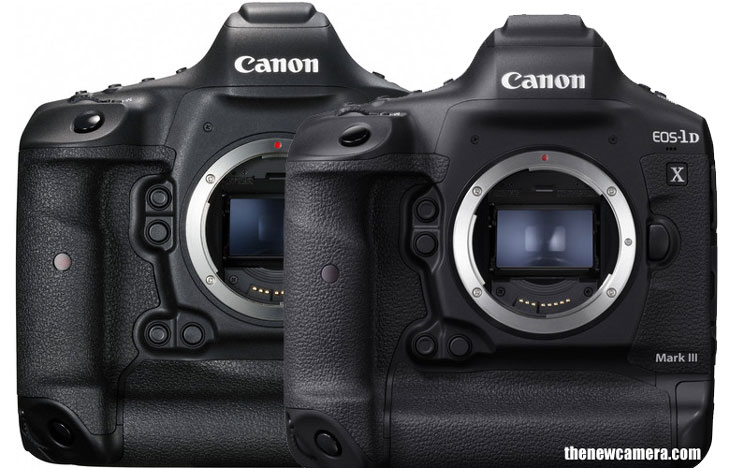
Get Canon 1DX Mark III camera from Amazon.com | B&H Store
TNC Exclusive – We are the first website to published detailed specification comparison review between the two camera.
Let’s have a specification comparison between the two flagship camera. The long rumored Canon 1DX Mark III camera finally arrived just before 2020 Olympic. Canon Took more than 4 years of time to create a brand new flagship camera and not only that consumers have to spend more than $6000+ to get the new body. In general Canon flagship camera arrives with lot of modifications from inside-out. Now, in this comparison we have compared each and every core specification of the camera to find out the best one.
1. Does Canon 1DX Mark III have new sensor ?
The short answer in no. They are using the same old 20MP CMOS technology they have used in the Canon 1DX Mark II camera. The sensor is redesigned to have better AF performance. So, you will be getting almost same image quality from both the camera.
2. Does Canon 1DX Mark III Have Better Image Quality than Canon 1DX Mark II ?
Slightly better (Upto 1 stop). We are getting slightly better image quality in the new Canon 1DX Mark III camera due to the introduction new Dual-Digic 6 image processor inside the camera we are getting 1 stop more ISO range in extended mode compared to the Canon 1DX Mark II camera. Not only that Canon 1DX Mark III also features new image decoding algorithm and with the help of the that we may notice some betterment in the DR, performance of the camera.
3. Sensor Details Comparison – Canon 1DX Mark III vs Canon 1DX Mark II
| Lens Mount |
Canon EF |
Canon EF |
| Camera Format |
Full-Frame (1x Crop Factor) |
Full-Frame (1x Crop Factor) |
| Pixels |
Actual: 21.5 Megapixel
Effective: 20.2 Megapixel |
Actual: 21.5 Megapixel
Effective: 20.2 Megapixel |
| Maximum Resolution |
5472 x 3648 |
5472 x 3648 |
| Aspect Ratio |
3:2 |
3:2 |
| Sensor Type |
CMOS |
CMOS |
| Sensor Size |
36 x 24 mm |
36 x 24 mm |
| Image File Format |
JPEG, RAW |
JPEG, HEIF, Raw |
| Bit Depth |
14-Bit |
14-Bit |
| Image Stabilization |
None |
None |
Having a 20MP sensor isn’t a bad thing for sports shooter, but not updating it even after 5 years of gap is bad. We do know that Sony is using BSI and Stacked CMOS sensor in their flasghip A7 and A9 cameras. But, in Canon we are still sicked to plain CMOS Tech that’s really embarrassing in 2020. ISO range of the camera extended upto 1 stop in MAX range thanks to the new image processor and image decoding algorithms.
| ISO Sensitivity |
Auto, 100 to 51200 (Extended: 50 to 409600) |
Auto, 100 to 51200 (Extended: 50 to ISO 819200) |
| Shutter Speed |
Electronic Front Curtain Shutter
1/8000 to 30 Seconds
Bulb Mode |
Electronic Front Curtain Shutter
1/8000 to 30 Seconds
Bulb Mode |
| Metering Method |
Evaluative, Partial, Spot |
Evaluative, Partial, Spot |
| Exposure Modes |
Aperture Priority, Manual, Program, Shutter Priority |
Aperture Priority, Manual, Program, Shutter Priority |
| Exposure Compensation |
-5 to +5 EV (1/3, 1/2 EV Steps) |
-5 to +5 EV (1/3, 1/2 EV Steps) |
| Metering Range |
0 to 20 EV |
0 to 20 EV |
| White Balance |
Auto, Cloudy, Color Temperature, Custom, Daylight, Flash, Fluorescent (White), Shade, Tungsten |
Auto, Cloudy, Color Temperature, Custom, Daylight, Flash, Fluorescent (White), Shade, Tungsten |
| Continuous Shooting |
Up to 14 fps at 20.2 MP for up to 170 Exposures (Raw) |
Up to 20 fps at 20.2 MP for up to 1000+ Exposures (Raw) |
| Interval Recording |
No |
No |
| Self-Timer |
2/10-Second Delay |
2/10-Second Delay |
| Mirror Lock-Up |
Yes |
Yes |
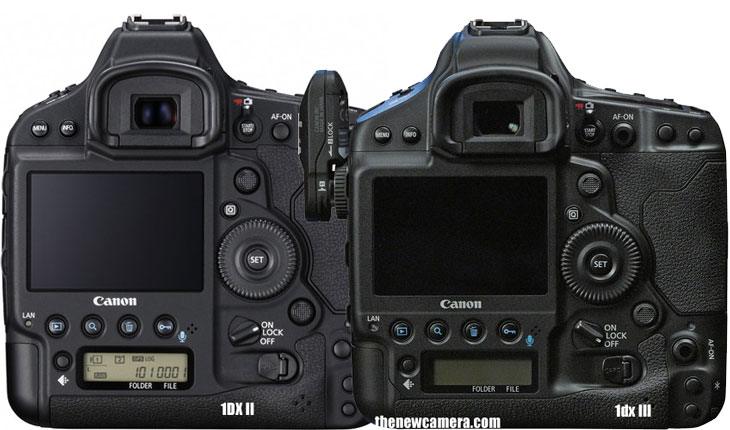
4. Best Canon Video DSLR 2020 ?
Undoubtedly Canon 1DX Mark III is the best Canon DSLR camera of 2020. The Canon 1DX Mark III camera does full sensor readout and uncroopped 4K Video recording with DPAF support upto 24 and 30 FPS. The camera is also able to record 5.4K Video, which is really a amazing thing for a DSLR camera. But, unfortunately we do have some limitations like now DPAF in RAW video mode as well as no DPAF in 4K Video mode at 60p/50p. See the list of DPAF limitations here
| Recording Modes |
DCI 4K (4096 x 2160) at 50p/59.94p [800 Mb/s]
DCI 4K (4096 x 2160) [500 Mb/s]
Full HD (1920 x 1080) at 100p/119.88p [360 Mb/s]
Full HD (1920 x 1080) at 50p/59.94p [180 Mb/s]
Full HD (1920 x 1080) at 23.976p/24.00p/25p/29.97p [90 Mb/s]
Full HD (1920 x 1080) at 50p/59.94p [60 Mb/s]
Full HD (1920 x 1080) at 23.976p/24.00p/25p/29.97p [30 Mb/s]
Full HD (1920 x 1080) at 50p/59.94p [60 Mb/s]
Full HD (1920 x 1080) at 23.976p/24.00p/25p/29.97p [30 Mb/s]
Full HD (1920 x 1080) at 25p/29.97p [12 Mb/s] |
5.4K RAW (59.94p / 50.00p) 2,600 Mbps
5.4K RAW (29.97p / 25.00p / 24.00p / 23.98p)
4K DCI (59.94p / 50.00p) / ALL-I
4K DCI (59.94p / 50.00p) / IPB
4K DCI (29.97p / 25.00p / 24.00p / 23.98p) / ALL-I
4K DCI Crop (29.97p / 25.00p / 24.00p / 23.98p) / IPB Approx. 120 Mbps
4K UHD (59.94p / 50.00p) / ALL-I
4K UHD (59.94p / 50.00p) / IPB
4K UHD (29.97p / 25.00p) / ALL-I
Full HD (119.9p / 100.0p) / ALL-I
Full HD (59.94p / 50.00p) / ALL-I
Full HD (59.94p / 50.00p) / IPB
Full HD (29.97p / 25.00p) / ALL-I
|
| External Recording Modes |
Full HD (1920 x 1080) at 100p/120p
Full HD (1920 x 1080) at 50p/59.94p
Full HD (1920 x 1080) at 23.976p/24.00p/25p/29.97p
Full HD (1920 x 1080) at 25p/29.97p |
|
| Recording Limit |
Up to 29 Minutes, 59 Seconds for DCI 4K (4096 x 2160) |
Up to 29 Minutes, 59 Seconds |
| Video Encoding |
NTSC/PAL |
|
| ISO Sensitivity |
Auto/Manual: 100 to 25600 |
Auto/Manual: 100 to 25600 |
| Audio Recording |
Built-In Microphone (Mono)
External Microphone Input |
Built-In Microphone (Mono)
External Microphone Input |
| Audio File Format |
AAC, Linear PCM (Stereo) |
AAC, Linear PCM (Stereo) |
5. Fastest Canon Camera in 2020 ?
We have to accept the fact Canon done lot of improvement in Canon 1DX Mark III camera compared to its predecessor. Canon New 1DX Mark III camera features
- Brand New Phase AF Sensor (191 AF point)
- New Eye AF Tracking Modes in Still and Video (III / 3rd gen DPAF Tech finally in flagship )
- Continuous AF upto 16FPS (MAX 20 FPS)
- AF Sensitivity range improved (Upto 1 Stop)
- 525 AF Zones added to redesigned 20MP Sensor (More dense AF)
6. AF System Comparison – Canon 1DX Mark III vs Canon 1DX Mark II
| Focus Type |
Auto and Manual Focus |
Auto and Manual Focus |
|
| Focus Mode |
Continuous-Servo AF (C), Manual Focus (M), Single-Servo AF (S) |
Continuous-Servo AF (C), Manual Focus (M), Single-Servo AF (S) |
|
| Autofocus Points |
Phase Detection: 61 (41 Cross-Type) |
Up to 191 points (cross type AF point: up to 155 points) |
|
| Autofocus Sensitivity |
-3 to +18 EV |
-4 to +21 EV |
|
7. Viewfinder / Display Unit – Canon 1DX Mark III vs Canon 1DX Mark II
Canon used more dense display this time, and not only that we also have illuminated buttons.
| Viewfinder Type |
Optical (Pentaprism) |
Optical (Pentaprism) |
| Viewfinder Eye Point |
20 mm |
20 mm |
| Viewfinder Coverage |
100% |
100% |
| Viewfinder Magnification |
Approx. 0.76x |
Approx. 0.76x |
| Diopter Adjustment |
-3 to +1 |
-3 to +1 |
| Monitor Size |
3.2″ |
3.2″ |
| Monitor Resolution |
1,620,000 Dot |
2,100,000 Dot |
| Monitor Type |
Fixed Touchscreen LCD |
Fixed Touchscreen LCD |
8. Flash Memory – Canon 1DX Mark III vs Canon 1DX Mark II
Introduction of DUAL CFexpress memory card lot is a welcome edition.
| Memory Card Slot |
Slot 1: CompactFlash (UDMA 7)
Slot 2: CFast (CFast 2.0) |
Dual Slot: CFexpress |
| Wireless |
Wi-Fi (via Adapter) |
Wi-Fi (via Adapter) |
| GPS |
No |
No |
9. Physical Comparison
The new camera have exactly same body size compared to its predecessor. But, weigh 300gm less than Canon 1DX Mark II.
| Battery |
1 x LP-E19 Rechargeable Lithium-Ion, 11.1 VDC, 2750 mAh (Approx. 1210 Shots)
or
1 x LP-E4N Rechargeable Lithium-Ion, 11.1 VDC, 2450 mAh
or
1 x LP-E4 Rechargeable Lithium-Ion, 11.1 VDC, 2300 mAh |
1 x LP-E19 Rechargeable Lithium-Ion, 11.1 VDC, 2750 mAh (Approx. 1210 Shots)
or
1 x LP-E4N Rechargeable Lithium-Ion, 11.1 VDC, 2450 mAh
or
1 x LP-E4 Rechargeable Lithium-Ion, 11.1 VDC, 2300 mAh |
| Dimensions (W x H x D) |
158 x 167.6 x 82.6 mm |
158.0 x 167.6 x 82.6 mm |
| Weight |
1530 g (Body with Battery and Memory) |
1,250 g (Body with Battery and Memory) |
10. Canon 1DX Mark III vs Canon 1DX Mark II Verdict
Canon does updated the camera, but in a limited way. If you are a sports shooter and if you think the new AF system will help you than you can sure invest $6000+ in the camera body. If you are someone who already own Canon 1DX Mark II camera and thinking for and upgrade, I will recommend you should wait, Canon EOS R professional on its way and it will sure surprise us with its core specification.
Get Canon 1DX Mark III camera from Amazon.com | B&H Store

Get LIVE RUMORS –> FACEBOOK | TWITTER | INSTAGRAM to to get live news + Canon rumors 24X7
By admin, on May 19th, 2019
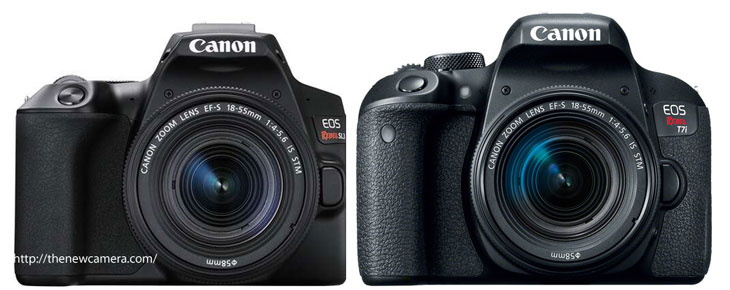
Canon 200D II / SL3 vs Canon 800D / T7i – We have done a specification comparison review between these two camera. Let’s find out which is best for you.
Sensor and other specification
| Imaging |
|
| Lens Mount |
Canon EF-S |
|
Canon EF-S |
| Camera Format |
APS-C (1.6x Crop Factor) |
|
APS-C (1.6x Crop Factor) |
| Pixels |
Actual: 25.8 Megapixel
Effective: 24.1 Megapixel |
|
Actual: 25.8 Megapixel
Effective: 24.2 Megapixel |
| Maximum Resolution |
6000 x 4000 |
|
6000 x 4000 |
| Aspect Ratio |
1:1, 3:2, 4:3, 16:9 |
|
1:1, 3:2, 4:3, 16:9 |
| Sensor Type |
CMOS |
|
CMOS |
| Sensor Size |
22.3 x 14.9 mm |
|
22.3 x 14.9 mm |
| Image File Format |
JPEG, RAW |
|
JPEG, RAW |
| Bit Depth |
14-Bit |
|
14-Bit |
| Image Stabilization |
Digital, 5-Axis (Video Only) |
|
Digital, 5-Axis (Video Only) |
The sensor size, megapixels are almost same and even the ISO range of the camera is exactly same. Both sensor are using plain CMOS sensor tech, so more or less you will be getting same image quality from both the camera.
Exposure Modes, Metering Mode and Continuous shooting speed
| ISO Sensitivity |
Auto, 100 to 25600 (Extended: 100 to 51200) |
|
Auto, 100 to 25600 (Extended: 100 to 51200) |
| Shutter Speed |
Mechanical Shutter
1/4000 to 30 Second
Bulb Mode |
|
1/4000 to 30 Seconds
Bulb Mode |
| Metering Method |
Center-Weighted Average, Evaluative, Partial, Spot |
|
Center-Weighted Average, Evaluative, Partial, Spot |
| Exposure Modes |
Aperture Priority, Manual, Program, Shutter Priority |
|
Aperture Priority, Manual, Program, Shutter Priority |
| Exposure Compensation |
-5 to +5 EV (1/3, 1/2 EV Steps) |
|
-5 to +5 EV (1/3, 1/2 EV Steps) |
| Metering Range |
1 to 20 EV |
|
1 to 20 EV |
| White Balance |
Auto, Cloudy, Custom, Daylight, Flash, Fluorescent (White), Shade, Tungsten |
|
Auto, Cloudy, Custom, Daylight, Flash, Fluorescent (White), Shade, Tungsten |
| Continuous Shooting |
Up to 5 fps at 24.1 MP for Unlimited Exposures (JPEG)
Up to 5 fps at 24.1 MP for up to 10 Exposures (Raw) |
|
Up to 6 fps at 24.2 MP for up to 190 Exposures (JPEG)
Up to 6 fps at 24.2 MP for up to 21 Exposures (Raw)
Up to 3 fps at 24.2 MP for up to 190 Exposures (JPEG)
Up to 3 fps at 24.2 MP for up to 21 Exposures (Raw) |
| Interval Recording |
Yes |
|
Yes |
| Self Timer |
2/10-Second Delay |
|
2/10-Second Delay |
We have a lot of common specification between the two camera. As you can see in specification table the continuous shooting speed of the Canon T77 / 800D is 1 FPS more compared to Canon 200D but limited to 190 shots. With Canon 200D you are getting bit extra buffer and unlimited frames option till card is full.
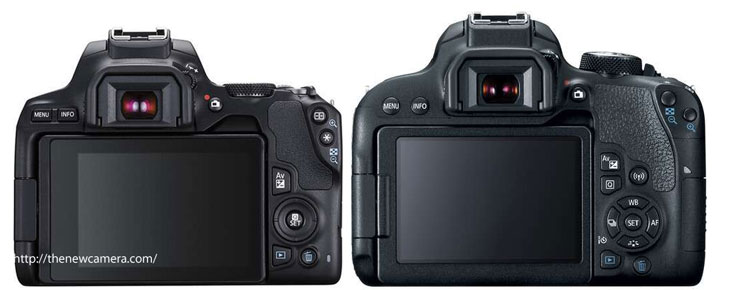
Video mode Comparison – Canon 200D II / SL3 vs Canon 800D / T7i
| Recording Modes |
MP4/H.264
UHD 4K (3840 x 2160) at 23.976p/25p [120 Mb/s]
Full HD (1920 x 1080) at 25p/29.97p/50p/59.94p [12 to 60 Mb/s]
HD (1280 x 720) at 50p/59.94p [26 Mb/s] |
|
MP4/H.264
Full HD (1920 x 1080) at 59.94p [60 Mb/s]
Full HD (1920 x 1080) at 23.976p/29.97p [30 Mb/s]
Full HD (1920 x 1080) at 29.97p [12 Mb/s]
HD (1280 x 720) at 59.94p [26 Mb/s]
HD (1280 x 720) at 29.97p [4 Mb/s]
SD (640 x 480) at 29.97p [9 Mb/s]
SD (640 x 480) at 29.97p [3 Mb/s]
MOV/iFrame
Full HD (1920 x 1080) at 29.97p [90 Mb/s] |
| External Recording Modes |
4:2:2 10-Bit
DCI 4K (4096 x 2160) at 23.976p/29.97p
Full HD (1920 x 1080) at 59.94i/59.94p
SD (640 x 480) at 59.94p |
|
|
| Recording Limit |
Up to 29 Minutes, 59 Seconds |
|
Up to 29 Minutes, 59 Seconds |
| Video Encoding |
NTSC/PAL |
|
NTSC/PAL |
| ISO Sensitivity |
100 to 12800 |
|
Auto/Manual: 100 to 12800 (Extended: 25600) |
| Audio Recording |
Built-In Microphone (Stereo)
External Microphone Input (Stereo) |
|
Built-In Microphone (Stereo)
External Microphone Input |
Canon 200D II / Canon SL3 camera features 4K video recording option and you can also record 10Bit videos via HDMI port.Canon 800D / T7i camera limited to full HD video recording mode only. However as we all know that the 4K video recording mode of Canon 800D / T7i is not so usable. Due to the crop and CDAF issue.
Canon 200D II / SL3 vs Canon 800D / T7i – Focus and other feature
| Focus Type |
Auto and Manual Focus |
|
Auto and Manual Focus |
| Focus Mode |
Continuous-Servo AF (C), Manual Focus (M), Single-Servo AF (S) |
|
Automatic (A), Continuous-Servo AF (C), Manual Focus (M), Single-Servo AF (S) |
| Autofocus Points (Phase) |
Phase Detection: 9 (9 Cross-Type) |
|
Phase Detection: 45 (45 Cross-Type) |
| DPAF Points |
3975 AF Points |
|
-Unknown |
Canon 200D II / SL3 feature revised sensor, the sensor is optimize to do more better AF performance compared to existing Canon SL2 / 200D camera. The total number of on sensor AF points are further divided 143 zones so users can select it easily without an issue.
Battery and Physical
| Battery |
1 x LP-E17 Rechargeable Lithium-Ion, 7.2 VDC, 1040 mAh (Approx. 1630 Shots) |
|
1 x LP-E17 Rechargeable Lithium-Ion, 7.2 VDC, 1040 mAh |
| Dimensions (W x H x D) |
4.82 x 3.65 x 2.75″ / 122.4 x 92.6 x 69.8 mm |
|
5.2 x 3.9 x 3″ / 131 x 99.9 x 76.2 mm |
| Weight |
15.84 oz / 449 g (Body with Battery and Memory) |
|
1.17 lb / 532 g |
Canon T7i camera features 820 shots per charge and with Canon 200D II / SL2 camera you can capture 1040 shots per charge. The 200D II is more light weight and bit small compared to 800D.
Verdict of Canon 200D II / SL3 vs Canon 800D / T7i:
Canon 200D II / SL3 camera is giving you next generation of DPAF system which will help you to get fast AF in still(Liveview) and video mode and a option to record 4K video with 10bit output . Not only that, you are also getting bit more battery life with light-weight body. We highly recommend you to go with Canon 200D II / SL3 camera.
Get Canon 800D / T7i camera from Amazon | B&H
Buy Canon 200D II / SL3 camera from B&H Store
Also see – Best Lenses for Canon 200D II / Canon SL3 / Canon 250D
By admin, on February 21st, 2019
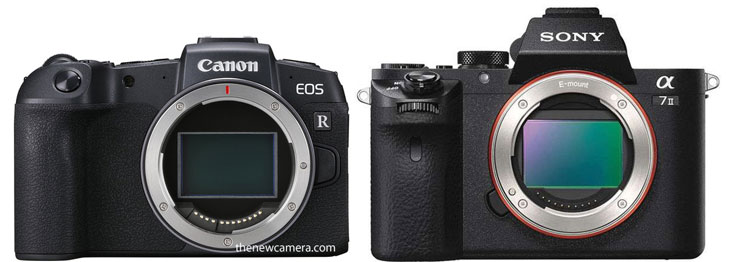
We are doing a specification comparison review between Canon EOS RP vs Sony A7 II, to tell you the name of best camera in between the Canon EOS RP vs Sony A7 II
Price Difference between – Canon EOS RP vs Sony A7 II
Now its specification comparison time, we are comparing the specification of Canon EOS RP camera with with the Ultra Popular and still one of the best selling Fullframe Mirrorless camera the Sony A7 II.
So, let’s begin, take a look at the details in comparison sheet of both the camera. We are comparing every possible specification that may effect your choice of preference.
| Camera Name |
Canon EOS RP |
|
|
Sony A7 II |
| Pixels |
Actual: 27.1 Megapixel
Effective: 26.2 Megapixel |
|
|
Actual: 24.7 Megapixel
Effective: 24.3 Megapixel |
| Tech |
CMOS |
|
|
Exmor CMOS |
| Aspect Ratio |
3:2, 4:3, 16:9 |
|
|
3:2, 16:9 |
| Sensor Size |
35.9 x 24 mm |
|
|
35.8 x 23.9 mm |
| File Formats |
Still Images: JPEG, RAW
Movies: AVC/H.264, MP4
Audio: AAC, Linear PCM |
|
|
Still Images: JPEG, RAW
Movies: AVCHD 2.0, XAVC S
Audio: AAC LC, Dolby Digital 2ch, Linear PCM (Stereo) |
| Bit Depth |
14-Bit |
|
|
14-Bit |
| Dust Reduction System |
Yes |
|
|
Yes |
| Memory Card Type |
SD
SDHC
SDXC |
|
|
SDXC
SDHC
SD
Memory Stick PRO Duo (High Speed)
Memory Stick PRO HG-Duo
Memory Stick XC-HG Duo |
| Image Stabilization |
Digital, 5-Way |
|
|
Sensor-Shift, 5-Way |
As we all know that Canon EOS RP uses the same sensor as of Canon 6D Mark II camera. So, expecting a better dynamic range from Canon 6D Mark II as we have in Sony A7 II isn’t fair.
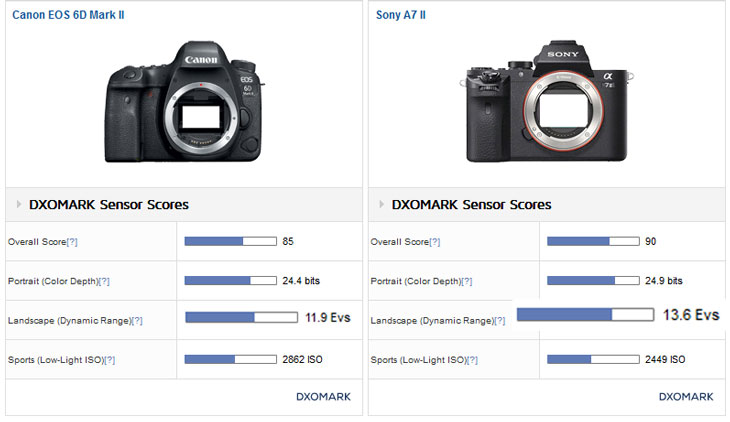
What actually improved from Canon 6D Mark II vs Sony A7 II ? By the Introduction of new DIGIC 8 image processor the Canon also implemented new noise processing algorithms with the camera. So, the noise of the camera is bit more controlled compared to Canon 6D Mark II.
Exposure and more…
| Exposure Control |
|
|
Canon EOS RP |
|
Sony A7 II |
| ISO Sensitivity |
Auto, 100 to 40000 (Extended Mode:50 to 102400) |
|
100 to 25600 (Extended Mode:50 to 25600) |
| Shutter |
30 to 1/4000 Second , Bulb Mode |
|
Type: Electronic & Mechanical
Speed: 1/8000 to 30 Second , Bulb Mode |
| Exposure Modes |
Modes: Aperture Priority, Manual, Program, Shutter Priority
Metering Range: EV -3.0 to EV 20.0
Compensation: -3 EV to +3 EV (in 1/3, 1/2 EV Steps) |
|
Modes: Aperture Priority, Auto, Manual, Programmed Auto, Scene Selection, Shutter Priority, Sweep Panorama
Metering Range: EV -1.0 to EV 20.0
Compensation: -5 EV to +5 EV (in 1/3 or 1/2 EV Steps) |
| Buffer/Continuous Shooting |
Up to 5 fps at 26.2 MP for Unlimited Frames in JPEG Format
Up to 5 fps at 26.2 MP for up to 50 Frames in Raw Format |
|
Up to 5 fps at 24 MP for up to 50 Frames |
As you can see Canon EOS RP features extended ISO range compared to Sony A7 II Camera. Canon EOS RP features ISO range starting from 100-40,000 in standard Range and 50-102400 in Extended Range.
Whereas, Sony A7II camera features Standard ISO range from 100-25600 and you also have a option to push your ISO range to ISO 50.
In general more ISO range means better low-light performance. But with Sony A7 II camera you are also getting 5 axis Image stabilization system. So, when you are shooting in low light environment you can hit more lower shutter speed (upto 5 stop) when compared to Canon EOS RP camera.
One of the best thing is you don’t have to worry about a bit while using Prime lenses or third party lenses with your camera. Since, image stabilization will help you all the time despite of type of lenses you are using.
4K Video – Canon EOS RP vs Sony A7 III
| AV Recording |
|
|
| Video Recording |
Yes |
|
|
Yes |
| Video Format |
3840 x 2160p at 23.98/25 fps (MP4 via H.264)
1920 x 1080p at 25/29.97/50/59.94 fps (60 Mb/s MP4 via H.264)
1280 x 720p at 25/29.97/50/59.94 fps (12 Mb/s MP4 via H.264) |
|
|
1920 x 1080p at 24/30/60 fps (50 Mb/s XAVC S)
1920 x 1080p at 60 fps (28 Mb/s AVCHD)
1920 x 1080i at 60 fps (24 Mb/s AVCHD)
1920 x 1080i at 60 fps (17 Mb/s AVCHD)
1920 x 1080p at 24 fps (24 Mb/s AVCHD)
1920 x 1080p at 24 fps (17 Mb/s AVCHD)
1440 x 1080 at 30 fps (12 Mb/s MP4)
640 x 480 at 30 fps (3 Mb/s MP4) |
| Output |
MP4 |
|
|
MP4, XAVC S, S-Log2 |
| Video Clip Length |
Up to 29 Minute 59 Second |
|
|
Up to 29 Minutes |
| Audio Recording |
Built-In Mic: With Video (Stereo) |
|
|
Built-In Mic: With Video (Stereo) |
Canon EOS RP camera can record Videos in 4K whereas the Sony A7II camera limited to Full HD video recording mode only.
But Keep in Mind the Canon EOS RP Camera have some issues in 4K video recording mode
Limitations of Canon EOS RP in 4K Mode
- Canon EOS RP uses the APS-C Portion of the sensor, so you will be getting very limited dynamic range
- Canon EOS RP camera 4K video mode suffers from 1.6X Crop factor.
- Canon EOS RP camera doesn’t have DPAF support when you are recording 4K videos.
Limitation of Canon EOS RP camera in Full HD Video Mode
In Canon EOS RP camera is missing 24p frame option in Full HD and HD recording mode.
Sony A7 II Camera doesn’t miss any standard recording option in Full HD video mode.
At the same time Sony A7 II camera 24 MP BSI CMOS Video Dynamic range is better compared to Canon EOS RP 26MP CMOS camera.
8Bit output with S-Log2 whereas Canon EOS RP has 8bit output without C-log.
DPAF vs HYBRID – Auto Focus
| Focus Control |
|
| Focus Type |
Auto & Manual Focus |
|
Auto & Manual Focus |
| Continuous Focus |
Continuous AF upto 3 FPS |
|
Continuous AF upto 5 FPS |
| Autofocus Points |
Phase Detection: 4779 |
|
Phase Detection: 117
Contrast Detection: 25 |
Canon clearly have a upper hand in the specs sheet while mentioning their EOS RP camera carry have more than 4K AF area zones or segments.
So, it’s very clear that Canon will have more AF screen coverage .
Fastest Camera – Canon EOS RP or Sony A7 II ?
Canon EOS RP camera fails to give Continuous AF support at 5FPS more, Continuous AF starts from 3 FPS and Subject tracking goes down upto 2.6 FPS.
Sony A7 II camera features Continuous shooting speed 5 FPS full time AF support and very accurate Eye AF support while recording videos.
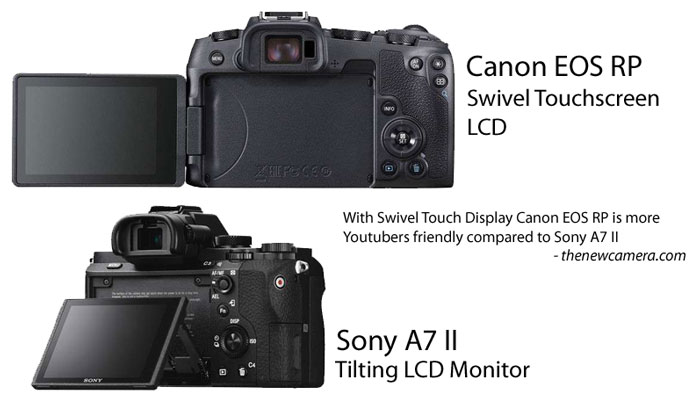
Which one has better Display ?
| Viewfinder/Display |
|
| Viewfinder Type |
Electronic |
|
Electronic |
| Viewfinder Size |
0.39″ |
|
0.5″ |
| Viewfinder Pixel Count |
2,360,000 |
|
2,359,296 |
| Viewfinder Eye Point |
22.00 mm |
|
27.00 mm |
| Viewfinder Coverage |
100% |
|
100% |
| Viewfinder Magnification |
Approx. 0.70x |
|
Approx. 0.71x |
| Diopter Adjustment |
-4 to +1 m |
|
-4 to +3 m |
| Display Screen |
3″ Rear Screen Swivel Touchscreen LCD (1,040,000) |
|
3″ Tilting LCD (1,228,800) |
| Screen Coverage |
100% |
|
100% |
Canon EOS RP camera features better touch screen and viewfinder, compared to Sony A7II camera.
Other Features
Sony A7 II camera features better battery life (100+ shots), You will be also getting Environmental sealing with Sony A7 II camera. No weather sealing in Canon EOS RP.
Comparatively if we talk about list of lenses available, then we don’t have more than 10 lenses for Canon EOS RF Mount camera at the time I am writing this post. Whereas, Sony A7II camera have 100+ lenses out there specifically made for Sony FE Mount cameras.
Verdict:
For Hybrid Shooters we have no option other than Canon EOS RP, nature of display Canon EOS RP is more user friendly compared to Sony A7 II. For still shooters we recommend Sony A7 II camera, since the camera features better dynamic range, In-body 5 axis Image Stabilization system and better continuous drive.
Canon EOS RP $1299 [Body Price] Amazon.com | B&H
Sony A7 II $998 [Body Price] Amazon.com | B&H
By admin, on February 18th, 2019
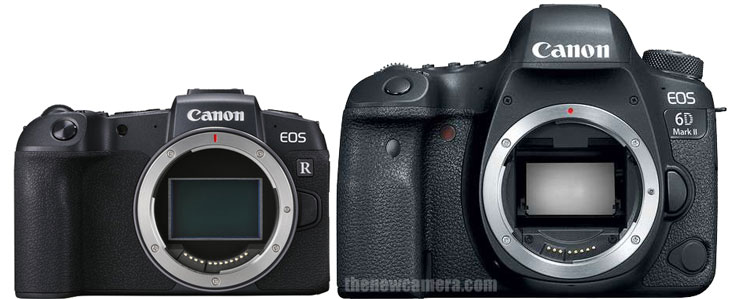
Canon 6D mark II vs the new Canon EOS RP. The canon EOS RP will cost you $200 less and features a bit better core specs than the existing Canon 6D Mark II camera. From the design its very clear that newly announced EOS RP camera features a very ultra compact design compared to the Canon 6D Mark II camera.
| Imaging |
|
| Lens Mount |
Canon RF |
|
Canon EF |
| Camera Format |
Full-Frame |
|
Full-Frame (1.0x Crop Factor) |
| Pixels |
Actual: 27.1 Megapixel
Effective: 26.2 Megapixel |
|
Actual: 27.1 Megapixel
Effective: 26.2 Megapixel |
| Aspect Ratio |
3:2, 4:3, 16:9 |
|
1:1, 3:2, 4:3, 16:9 |
| Sensor Type / Size |
CMOS, 35.9 x 24 mm |
|
CMOS, 35.9 x 24 mm |
| File Formats |
Still Images: JPEG, RAW
Movies: AVC/H.264, MP4
Audio: AAC, Linear PCM |
|
Still Images: JPEG, RAW
Movies: MJPEG, MOV, MP4,
Audio: AAC |
| Bit Depth |
14-Bit |
|
14-Bit |
| Dust Reduction System |
Yes |
|
Yes |
| Memory Card Type |
SD
SDHC
SDXC |
|
SDXC
SDHC
SD |
| Image Stabilization |
Digital, 5-Way |
|
Digital, 5-Way |
As we know that the sensor of both the camera excatly same, so it’s bit hard to find out the difference between the specs sheet. As we know that Canon 6D Mark II camera is a DSLR, so it uses additional Phase AF Module inside the camera. The Phase AF module features 45 Point AF system. And EOS RP doesn’t carry any external Phase AD module like the 6D Mark II.
Otherwise, Both camera features same DPAF sensor. So, AF speed will remain almost same, however AF speed also depend upon type of image processor, nature of mount and type of lenses used. Viewfinder isn’t that good as we have seen inside Canon 6D Mark II. EOS R viewfinder is also just awesome, but to reduce development cost Canon sacrificed the quality of the viewfinder.
Auto-focus
| Focus Control |
|
| Focus Type |
Auto & Manual Focus |
|
Auto & Manual Focus |
| Focus Mode |
Continuous-Servo AF (C), Single-servo AF (S) |
|
Automatic (A), Continuous-Servo AF (C), Manual Focus (M), Single-servo AF (S) |
| Autofocus Points |
Phase Detection: 4779 |
|
Phase Detection: 45 (45 Cross-Type) |
Don’t get into the trouble of counting AF points, both camera features same sensor. You will be getting Same AF performance in both the camera. However, the EOS RP camera loses out 45 point Phase AF module of Canon 6D Mark II DSLR due to the nature of its construction.
Exposure Control
| Exposure Control |
|
| ISO Sensitivity |
Auto, 100 to 40000 (Extended Mode:50 to 102400) |
|
Auto, 100 to 40000 (Extended Mode:50 to 102400) |
| Shutter |
30 to 1/4000 Second , Bulb Mode |
|
Type: Mechanical
Speed: 30 to 1/4000 Second , Bulb Mode |
| Metering Method |
Center-Weighted Average Metering, Evaluative Metering, Partial Metering, Spot Metering |
|
Center-Weighted Average Metering, Evaluative Metering, Partial Metering, Spot Metering |
| Exposure Modes |
Metering Range: EV -3.0 to EV 20.0
Compensation: -3 EV to +3 EV (in 1/3, 1/2 EV Steps) |
|
Metering Range: EV 1.0 to EV 20.0
Compensation: -5 EV to +5 EV (in 1/3 or 1/2 EV Steps) |
| Buffer/Continuous Shooting |
Up to 5 fps at 26.2 MP for Unlimited Frames in JPEG Format
Up to 5 fps at 26.2 MP for up to 50 Frames in Raw Format |
|
Up to 6.5 fps at 26.2 MP
Up to 3 fps at 26.2 MP |
Metering range is improved in new Canon RP camera, but at the same time the the exposure Compensation range is limited and not as good as Canon 6D Mark II.
Even after the introduction of Digic 8 image processor the continuous AF speed of the Canon EOS RP camera is slower compared to Canon 6D Mark II DSLR.
Video
| AV Recording |
|
| Video Recording |
Yes |
|
| Video Format |
3840 x 2160p at 23.98/25 fps (MP4 via H.264)
1920 x 1080p at 25/29.97/50/59.94 fps (60 Mb/s MP4 via H.264)
1280 x 720p at 25/29.97/50/59.94 fps (12 Mb/s MP4 via H.264) |
|
1920 x 1080p at 23.98/25/29.97/50/59.94 fps
1280 x 720p at 23.98/25/29.97/50/59.94 fps |
| Aspect Ratio |
16:9 |
|
16:9 |
| Video Clip Length |
Up to 29 Minute 59 Second |
|
1920 x 1080: 29 Minutes, 59 Seconds |
| Audio Recording |
Built-In Mic: With Video (Stereo)
Built-In Mic: With Video (Stereo) |
|
Built-In Mic: With Video (Stereo)
Optional External Mic: With Video (Stereo) |
Good news, Canon EOS RP shoots 4K video with contrast based AF, yep DPAF is restricted to Full HD only. You will be getting 1.6X Crop in 4K and no 24p option available in Full HD or HD Mode.
Canon 6D Mark II on the other side remains limited to Full HD video recording mode.
Display and Viewfinder
| Viewfinder/Display |
|
|
| Viewfinder Type |
Electronic |
|
|
Optical |
| Viewfinder Pixel Count |
2,360,000 |
|
|
98% |
| Display Screen |
3″ Rear Screen Swivel Touchscreen LCD (1,040,000) |
|
|
3″ Swivel Touchscreen LCD (1,040,000) |
Conclusion
Canon EOS RP doesn’t have any eye catching feature, if you already own Canon 6D Mark II camera, there is no need to upgrade and if you are planning to buy, then go with Canon EOS RP.
Buy Canon EOS RP Camera from B&H Store | Amazon USA | Amazon UK
Follow us on our social pages FACEBOOK | TWITTER | INSTAGRAM to get live news + Canon rumors 24X7
By admin, on August 25th, 2018
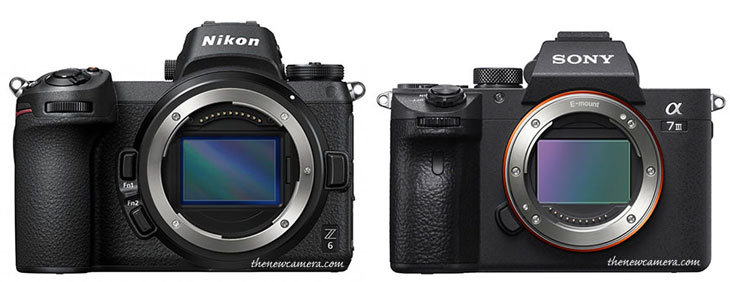
Nikon Z6 vs Sony A7 III. Take a look at the major differences between these two mirrorless camera which comes at apporx same price. We are going to put a detailed specs comparison review of the concert 6 camera vs Sony 7III so have a look and do share your thoughts and questions in the comment section below or even if you have any suggestion to this comparison..
Comparison between the Sony A7 III camera vs Nikon Z6. The Nikon Z6 is of-course Nikon first full frame mirrorless camera with 24 megapixel sensor, and features approx 273 autofocusing points on plane. The ISO range of the Nikon Z6 is almost equivalent to the Sony A7 III offerings. But its the matter of time and we have to wait to see the actual samples from both camera to Compare the differences, but before that we are doing a specification comparison review between these two camera point and let us find out The Major and differences between the two.
Nikon Z6 vs Sony A7 III – Comparison Review
| Feature/Models |
Nikon Z6 |
Sony A7 III |
| Megapixel |
24.5MP FX-Format BSI CMOS Sensor |
24 megapixels |
| Sensor size |
CMOS, 35.9 x 23.9 mm |
Full frame (35.6 x 23.8 mm) |
| Image processor |
Expeed 6 |
Bionz X & Front-End LSI |
| Low pass Filter |
No |
No |
| AF system |
On Sensor PDAF |
On Sensor PDAF |
| AF points |
273-Point |
693 Points |
| ISO |
100-204800 |
50-204800 |
| Shutter speed |
30 – 1/8000 |
|
| Image Stabilization |
Built-In 5-Axis Vibration Reduction |
5 Axis Image Stabilization |
| Continuous shooting speed |
12 fps Shooting |
10fps |
| Video |
UHD 4K30 Video |
4K30p |
| Display |
3.2″ 2.1m-Dot Tilting Touchscreen LCD |
3″ Rear Touchscreen Tilting LCD (921,600) |
| Hot shoe |
Yes |
Yes |
| Wireless |
WiFi / NFC |
WiFi / NFC |
| Environmentally sealed |
Yes |
Yes |
| Battery life |
310 |
710 |
| Weight |
675 g |
650 g |
| Size |
134 x 100.5 x 67.5 mm |
126.9 x 95.6 x 73.7 mm |
1. What made Nikon to jump on mirrorless lineup
Before you begin we must thanks Sony that made Nikon jump to the mirrorless line up, and not only Nikon the Canon is also preparing to jump on the mirrorless ship. It was also necessary for the moment we are living in the technology is changing and just like we have seen the shifting of film world to the digital world in the same manner, we will going to witness the change from DSLR to mirrorless world, for the companies those who are accepting or adopting the change early will have better survival rate in future, and that’s the key for success is to always evolve and it always accept the change.
2. 3rd Generation of Sony vs 1st Generation of Nikon
we are comparing the Nikon Z6 with the Sony A7 III camera, but at the same time we have to keep in mind that it’s the Nikon first generation of full frame mirrorless system camera.We are comparing the latest Sony is 7 III with Z6, what we have to keep in mind that more advanced models are said to be unfold in near future from Nikon which will going to have a bit more advanced Core specification to lead the mirrorless category. But for now we are comparing the first generation of Nikon mirrorless system cameras with Sony’s IIIrd Generation mirrorless camera. And before we begin let me tell you that Nikon Z6 have some limitation as well as some surprise inside it.
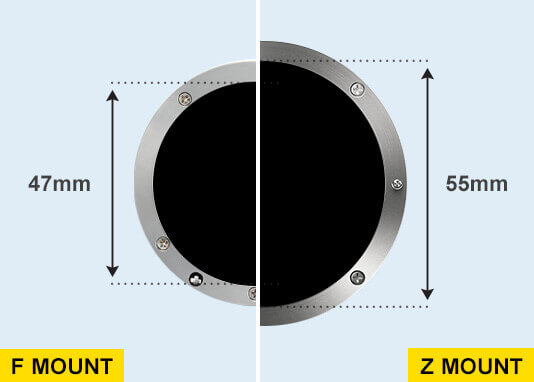
3. The Mount difference (55mm vs 46mm)
Nikon created a future perfect camera, the Z series Mount is really very big and it is capable to accept the f 0.95 lenses and if you’re going to look at the Nikon road map then you will surprise to see that Nikon is set to an announce NOCT NIKKOR 58 mm f/0.95 lens in the year of 2019. So, Nikon latest Z series camera is capable to accept lenses starting from the aperture F0.95. Due to the Limited image circle opening the Sony A7 or A9 series camera are not able to accept that 0.95 lenses even in near future.
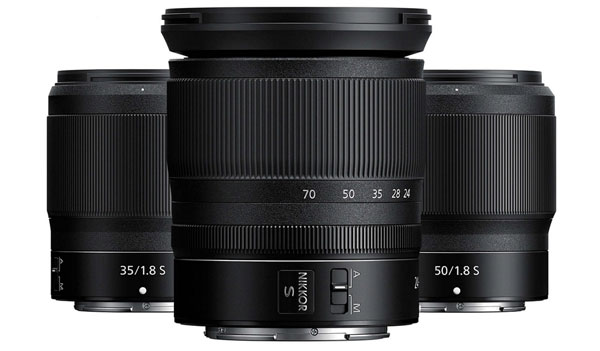
4. Limited native lenses
As you can see Nikon only announced 3 lenses with the Nikon full frame mirrorless system cameras, But there is also a possibility that you can use your old DSLR lenses with Nikon FTZ mount adaptor. But if you talk about the native lenses right now, then all we have only 3 lenses for Nikon Z Mount system and those include are 24 to 70 the 50 mm and finally the 35 mm f/1.8. we do have a road map from Nikon that shows the set of lenses coming in near future to satisfy the professional needs, but at the same time we have to accept the fact also that we do have a limited range of lenses for the Nikon mirrorless system cameras and if you are Nikon F-mount DSLR user having a bunch of FX format for lenses then there is no issue for you, but if you are a new user and new user and looking for a range of lenses then you may feel a bit suffocating in while getting Nikon Z series camera. The Z-series camera will have decent range of lenses in the year of 2019.
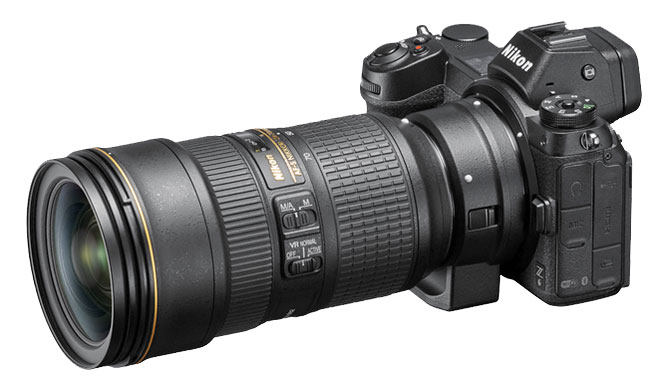
5. Nikon DSLR lenses compatibility with Nikon mirrorless system cameras
How much Nikon DSLR lenses are compatible with the new Z6 or Z7 mirrorless camera, based on the little hands on review of the model we have found that a Nikon is using some kind of external motor in the adaptor to drive the DSLR lenses and due to that the lens auto-focusing speed is not as fast as we have seen in the Nikon D850 or Nikon D5. That doesn’t mean the autofocusing is slower Or Poor then Sony A7 series. Now the AF speed of the Nikon Z series camera is still better than Nikon Z series camera but it is not competing with the Nikon DSLR phase auto focusing is speed when used with native lenses.
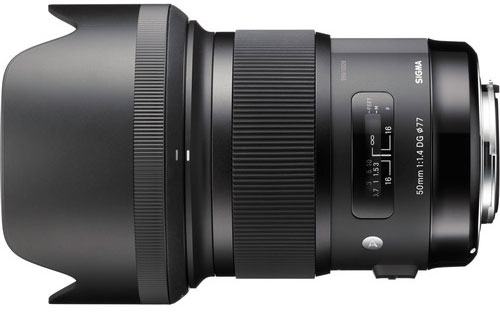
6. Nikon is bit more strict for Third Party Lens Makers
Nikon haven’t shared the details of their Z Mount with Third party lens maker’s specifically like Sigma, Tamron and others. Then again to create an Nikon Z Mount lens they have to reverse engineer the Mount to access the details of the camera. But Sony is just opposite they have shared the details of the FE as well as E mount and that’s why the Sigma the tamron are making some of the best lenses for Sony mirrorless cameras.
So, again if you are waiting for Nikon Z Mount lenses, then you have to wait for few years because Nikon native lenses are coming a bit late and at the same time as we have told U, Nikon is not willing to share the details of the Z Mount with other third party Lens Maker to save the profit they may get from making the lenses.
At the same time Nikon also claims that there FTZ mount adapter will allow you to have full compatibility with the 9III nikkor lenses.
7. Design and grip of the camera
let’s begin with the design and grip of the Camera, Nikon Z6 and Z7 camera have a bulky large front grip so user feel a bit more comfortable to their hands and fingers while holding the camera for a long time..Now on the rear side of the camera we do also get a large thumb grip.
Users with a bit bigger hands feel uncomfortable specifically while holding mirrorless camera such as Sony A7 or A9, both of them literally have a very small grip in the front which make it problematic if you are shooting for a long time.
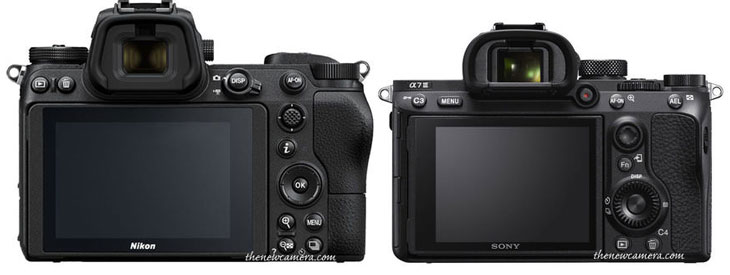
8. Viewfinder design is top-notch
The design Z6 is pretty good, Nikon has designed the viewfinder of the camera very cleverly, the viewfinder do have a bit large distance from the rear LCD screen of the camera. So, Your Face wouldn’t stick to the LCD screen while Looking through the viewfinder and if you wear glasses also even then you won’t find any problem while Looking through it.
Now let’s go technical the resolution of the Nikon Mirrorless viewfinder is III,690k dot OLED with a magnification ratio of .08x.
9. Weight Difference
and if you’re going to talk about the weight of both the camera the Nikon Z6 weighs approx 675 grams whereas Sony A7 III weighs approx 650 grams. So wait isn’t a big issue the Nikon Z6 is approx 25 gram bit more heavier than the Sony A7 III.
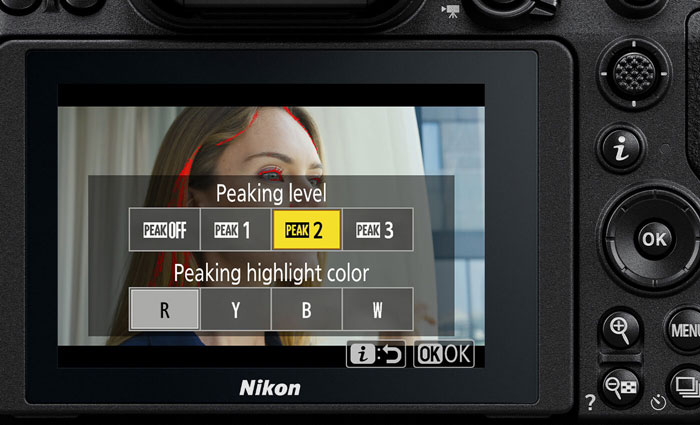
10. Nikon allow you to use full touchscreen of their mirrorless system cameras
you will surprise to know that the Sony A7 III camera which I have used to have some limitation while using the touch screen (limited to selecting AF points only or sliding the image), you can’t use it for zooming while reviewing the shots or in most of the time the touch screen isnt so useful. Maybe in the next generation of camera we don’t have such issues. But with Nikon Z6 and Z7 mirrorless camera I have seen that Nikon allows you to do the zoom, and all kind of stuff …, you can change settings and all that you want, since it carries well optimised and redesigned menu system for a touch screen. Now even if you’re going to compare about the display screen sizes, even then the Nikon do have a bit bigger touch screen compared to the Sony.
11. Top LCD display screen
With the Nikon Z6 camera you are getting top LCD display screen just like Sony A9 camera. But with the Sony A7 III camera you are not getting that, so if you are a DSLR user and do have a habit of using top display screen then of course the Nikon Z6 will make you bit more comfortable while you are shooting.
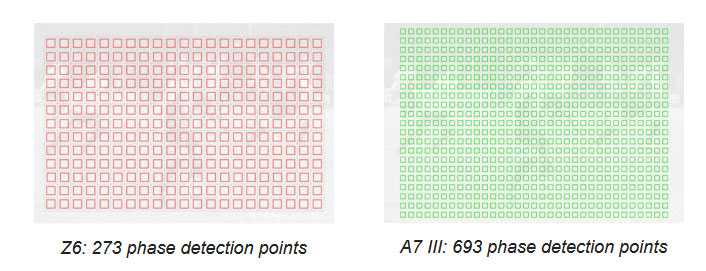
12. Autofocus
Nikon always work on roots to improve the core technology of the camera, the recently announced Z6 camera is capable to shoot in extremely dark light environment and features a minimum sensitivity range of – 4 Ev with F2 lens. Sony A7 III camera is limited to -III Ev with an F2 lens.
Let’s talk about Auto focusing points and other features, Sony A7III feature 693 AF points which is more dense compared to Z6 and and directly coming from Sony A9. As we all know Sony A9 auto focusing system is one of the best autofocus in system of the world.. Now other most biggest advantage in the auto focusing system of the Sony mirrorless cameras is eye AF tracking. It’s of of the best AF mode to track subject eye, Sony A7 III does it very well. Even in extreme conditions when your model is moving or running the eye tracking autofocus work very well.
13. No vari-angle display screen
Both camera doesn’t have vari-angle display screen, so the shooting ram Limited-And it is one of the biggest problem for youtubers those who see themselves while recording the video. So I again neither does Nikon Z6 not the Nikon z7 or even the Sony A7 III is capable to become the best camera for youtubers due to the Limited rotational movement or display screen. Yes you can use external monitors by the way to solve your problem.
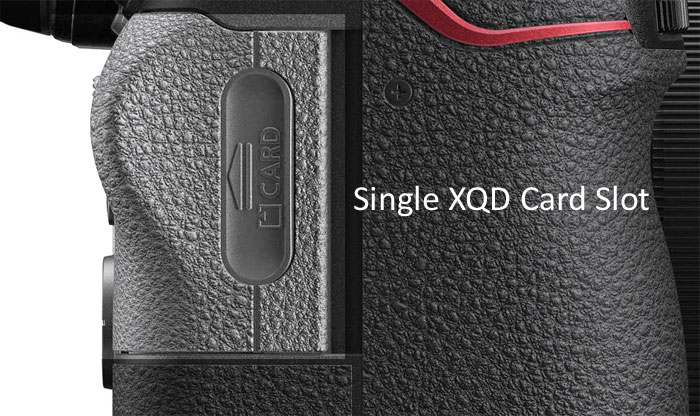
14. Memory card slots
Everyone is surprised to see that Nikon has opted only single xqd compatible slot in their new mirrorless cameras. So, if you have already bunch of SD card slot then it will not going to be used in the new Z6 or Z7 mirrorless camera.
Now as we all know the latest generation of Sony mirrorless cameras features Dual SD card slots in them and one of them is UHS II compatible. And in general professional photographers do like having extra memory card slot in their camera to avoid the memory run out problem in the middle of their project.
We hope the future generation of Nikon mirrorless system camera will have dual memory SD / XQD card slots.
15. Continuous shooting speed
The continuous shooting speed of Nikon Z6 camera is 12 frame per second, now the exposure is locked at the first frame. If you’re using the live you then the continuous shooting speed of the camera reduced up to 5.5 frames per second.
how does it compare against the Sony is 7III mirrorless camera let’s have a look, Sony A7 III camera can do 10 frames per second with auto exposure tracking, so it is really a great advantage with Sony that the exposure settings is not locked at the first frame as we have in the Z6 camera, you are getting the continuous auto exposure support even at 10 frames per second In the Sony A7 III camera which is really great.
16. Video quality Nikon mirrorless vs Sony mirrorless
Nikon Z6 features excellent video capabilities, Now here we have a difference of 10 bit vs 8 bit, the Sony A7 III limited to 8 bit output where as the Nikon Z6 have 10 bit output option to an external recorder via HDMI port. As we all know if you are a youtuber the YouTube doesn’t play videos above than 8 bit, 10 bit recording is for those who work professionally and do lot of stuff while editing. If you are a regular youtuber then you don’t actually need a 10 bit camera.
But again there are some video limitations of the Nikon Z6 camera that you must know before buying that camera.
Sony A7 III has a set of dedicated picture profiles, designed specifically for movie recording. With Sony A7 III camera you have a choice to set the S log2 and S log III which are available for internal recording, and you can also use the hybrid log Gama the HLG profile in the Sony A7 III camera.
Now for Nikon Z6 there is a N-log mode available via HDMI, so if you are interested in recording internally in your xqd card then you don’t get the option to set your desired B-Log profile. You need a external recorder to get your N-log file from Nikon Z6 and Nikon Z7 camera.
17. Battery life
before Sony A7 III camera, the battery life of A7 mirrorless camera we are terrible compared to DSLR. But due to Sony innovation the recently and out Sony A7 III camera uses the same battery of Sony A9. Which allow the Sony A7 III camera to the record 710 images in a single charge according to CIPA standard. Nikon Z6 battery life is limited to III10 shots in a single charge. Which is of course just half compared to the Nikon Z6 mirrorless camera.
18. Conclusion
It’s and effort to stop the migration of Nikon users to Sony camp
Now even Nikon knows there is no best camera other than Sony A7 III in the market, why I am telling you this because, Nikon Z6 is excellent camera but at the same time the auto focusing system is not as good as the Sony A7 III. The Nikon is still missing the eye auto tracking feature that the Sony have. And again the battery life is just half compared to the Sony. And in the video mode the log profiles is limited to external recorders. So, there are lot space is still left where Nikon have to improve.
The Nikon FTZ Mount adaptor available at $249 – Available at B&H Store
Buy Nikon Z6 camera from B&H | Amazon.com
Follow the Nikon Z6 Facebook Page | Nikon Z7 Facebook Page
Nikon Mirrorless Users Group
Subscribe thenewcamera YOUTUBE channel Stay with us on FACEBOOK | TWITTER | GOOGLE+ to get live news + rumors 24X7
By admin, on August 19th, 2018
Take a look at the image comparison between the Panasonic LX100 II camera versus the Other popular compact cameras of the world right now.

Panasonic LX 100 II vs The Panasonic ZS 200
The Panasonic LX 100 II camera vs The Panasonic ZS 200 camera. The Panasonic ZS 200 camera features of one inch sensor inside and ability to do 15 x optical zoom, the camera also captures 4K video at 30 frames per second and features 5 Axis hybrid optical image stabilization.
Now we can’t comment on the specs of the Panasonic LX100 II to camera. However the Panasonic LX100 Ii camera features bigger sensor compared to the ZS200 camera.
We will post update, a brief specification review between both the camera and all other once we get the full set of specification of the upcoming camera.

Panasonic LX100 II vs Fuji XF10
Fuji XF 10 camera features a large apsc format sensor with 24 megapixel resolution, the camera can also shoot 4K videos but limited to 15 frames per second which is ofcourse not usable for professional purposes.
So, if you want to get better image quality from your camera of course the Fuji x XF10 with a large sensor will give you have better output compared to the micro four thirds sensor having a cropped lens.
Now, if we compare the video modes of both the camera, then even the predecessor Panasonic LX100 camera still have a better video recording mode compared to the recently announced Fujifilm XF 10 camera. The only problem associated with the video recording in Panasonic LX100 camera was the slow autofocusing due to the absence of DFD auto focusing system, I hope this time Panasonic is using fast DFD auto focusing system in the Panasonic LX 100 II camera.
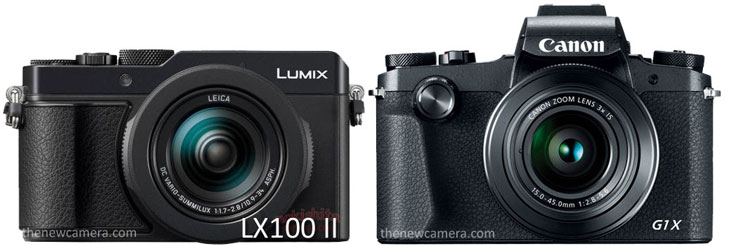
Panasonic LX100 II vs Canon G1X Mark III
The only issue associated with Canon G1X Mark III is Video limitation upto Full HD only, otherwise the camera feature relatively large imagine area compared to LX100 II camera. The canon compact camera features Dual Pixel CMOS AF Sensor, so it does blazing fast AF while recording still images or creating a video. One more noticeable to feature to have with Canon G1X Mark III is Dust- and Water-Resistant Construction, so you can use it even in light rain and dust-storms.

Panasonic LX100 II vs Fuji X100F
Panasonic LX100 II camera vs Fuji X100F, As we all know that @ $1299 we are getting a 23mm F2 lens and 24 MP X-Trans sensor. Fuji X-100F is a excellent tool for still shooters, however the camera remains limited to Full HD video mode. LX100 II look more versatile with 3X optical zoom lens and ability to do 4K despite of having a smaller sensor inside.

Panasonic LX100 II vs Sony RX100 VI
The RX100 VI is a flagship compact cameras to today’s world and features high-end core specs that include 20MP EXMOR R CMOS sensor, Fast Hybrid AF System with 315 Points and does 4K at 30p. The LCD display screen of the Sony RX100 VI camera can be bent forward to create selfie / videos . But LX100 II arrived with a fixed LCD display screen same as of its predecessor. The Major advantage of Panasonic LX100 II is sensor size / image quality, and we have to wait to see what coming inside the LX100 II camera.
The page will be updated soon once the LX100 II becomes official.
Follow Panasonic LX200 Page on facebook
Subscribe thenewcamera YOUTUBE channel Stay with us on FACEBOOK | TWITTER | GOOGLE+ to get live news + Panasonic rumors 24X7
|
KEEP THIS BLOG ALIVE - Support New Camera Buy Canon Lenses, Buy Music CD or Digital Camera at amazon it helps this site, and you do not pay anything extra, it is just a way to help support this site.

|





























